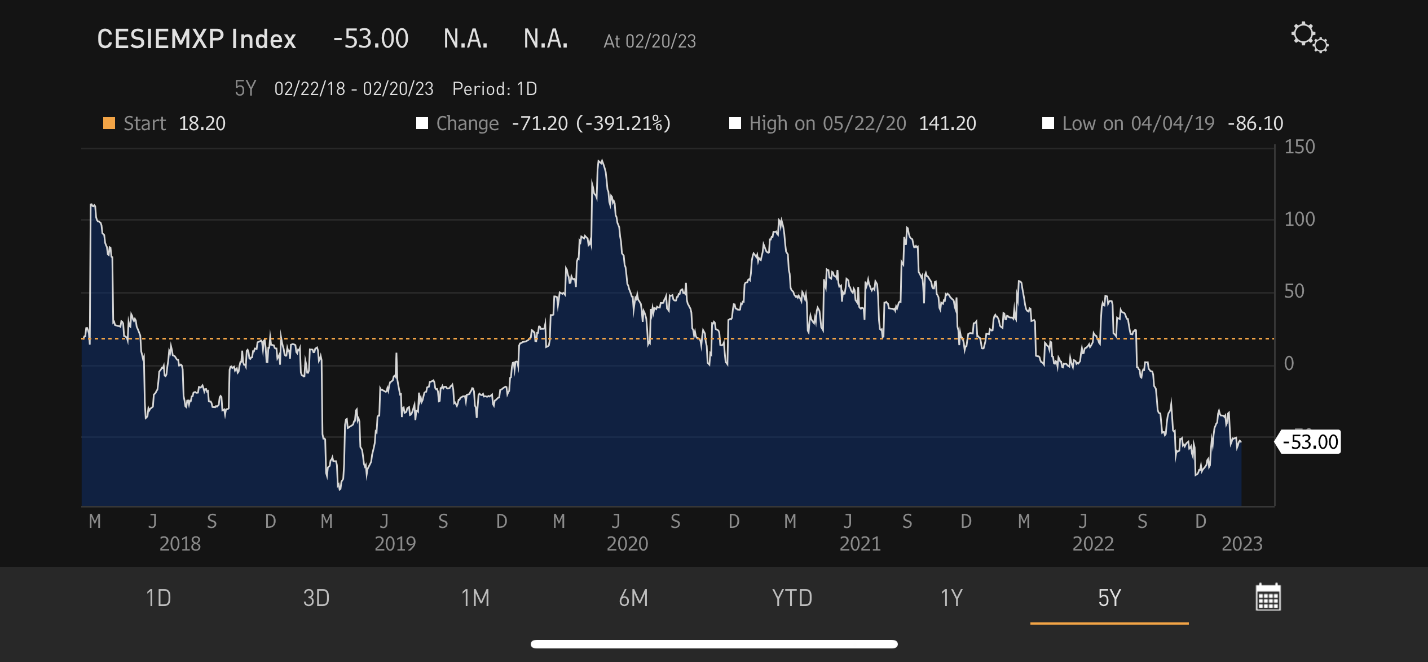Reviewing our 2023 emerging markets assumptions
Emerging markets’ credible and pro-active policy response to rising price pressures and China’s rebound are among key factors underpinning our 2023 outlook for emerging markets bonds. How have these assumptions been holding so far this year?
Emerging markets tightening cycle
Emerging markets' monetary authorities are passing with flying colors. Emerging markets inflation is moderating, but various central banks are not taking any chances and staying cautious, as the process of disinflation is rather bumpy and might take longer than previously thought. Mexico and the Philippines raised their respective policy rates by more than expected earlier this month, and even central banks that stayed on hold signaled that the bar for rate cuts is very high. The latest 'hawkish' surprise came from Israel, where the central bank opted for a larger 50 basis points rate hike yesterday, instead of expected 25 basis points, and signaled more tightening, because activity and inflation turned out much stronger than expected.
China rebound
Emerging markets’ relatively high real interest rates (vs. developed markets) provide a nice policy cushion against the (potentially) more hawkish US Federal Reserve (Fed), but for this cushion to translate into actionable trades, a decent growth outlook is often a must. China’s rebound is an important driver here, and various gauges/high frequency indicators show that domestic activity is definitely bottoming out. We are also hearing about additional policy measures to prop up the housing sector and promote bank lending – such as draft new rules on banks’ risk-weighting and a pilot scheme to allow real estate investments by private equity funds. Still, there are plenty of questions about the recovery’s timeline – especially in regards to consumption. A recent sell-side report suggested that excess savings might be smaller and partly used for precautionary purposes. Further, the use of excess savings might be slower initially, pushing the recovery to H2/early 2024.
Global growth outlook
China is not the only growth story we are watching – the growth outlook in advanced economies is also important, especially for more open emerging markets (note that the economic surprise index for emerging markets' exports is still in the red – see chart below). February’s preliminary activity gauges for the Eurozone (PMIs, or Purchasing Managers Indices) looked mixed – a very strong reading for the services PMI (53.0), but the manufacturing PMI (48.5) remains contractionary. The US PMIs looked almost as “conflicted” – the expansionary services PMI and the contractionary manufacturing PMI – except that manufacturing was better than expected. There was nothing in the release to suggest that the Fed should stop hiking – so, it’s good that emerging markets central banks are en garde.
Chart 1: Emerging markets export surprises – still in the red

Source: Bloomberg LP.
Citigroup Economic Surprise Index (CESI) tracks whether a core set of economic data series has been coming in under expectations, at expectations, or over expectations.
Published: 23 February 2023
Any views expressed are opinions of the author at the time of writing and is not a recommendation to act.
VanEck Investments Limited (ACN 146 596 116 AFSL 416755) (‘VanEck’) is the issuer and responsible entity of all VanEck exchange trades funds (Funds) listed on the ASX. This is general advice only and does not take into account any person’s financial objectives, situation or needs. The product disclosure statement (PDS) and the target market determination (TMD) for all Funds are available at vaneck.com.au. You should consider whether or not an investment in any Fund is appropriate for you. Investments in a Fund involve risks associated with financial markets. These risks vary depending on a Fund’s investment objective. Refer to the applicable PDS and TMD for more details on risks. Investment returns and capital are not guaranteed.




